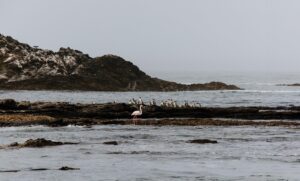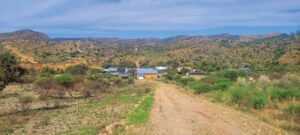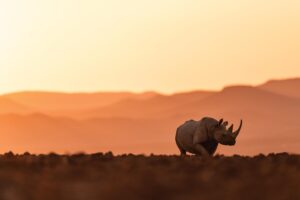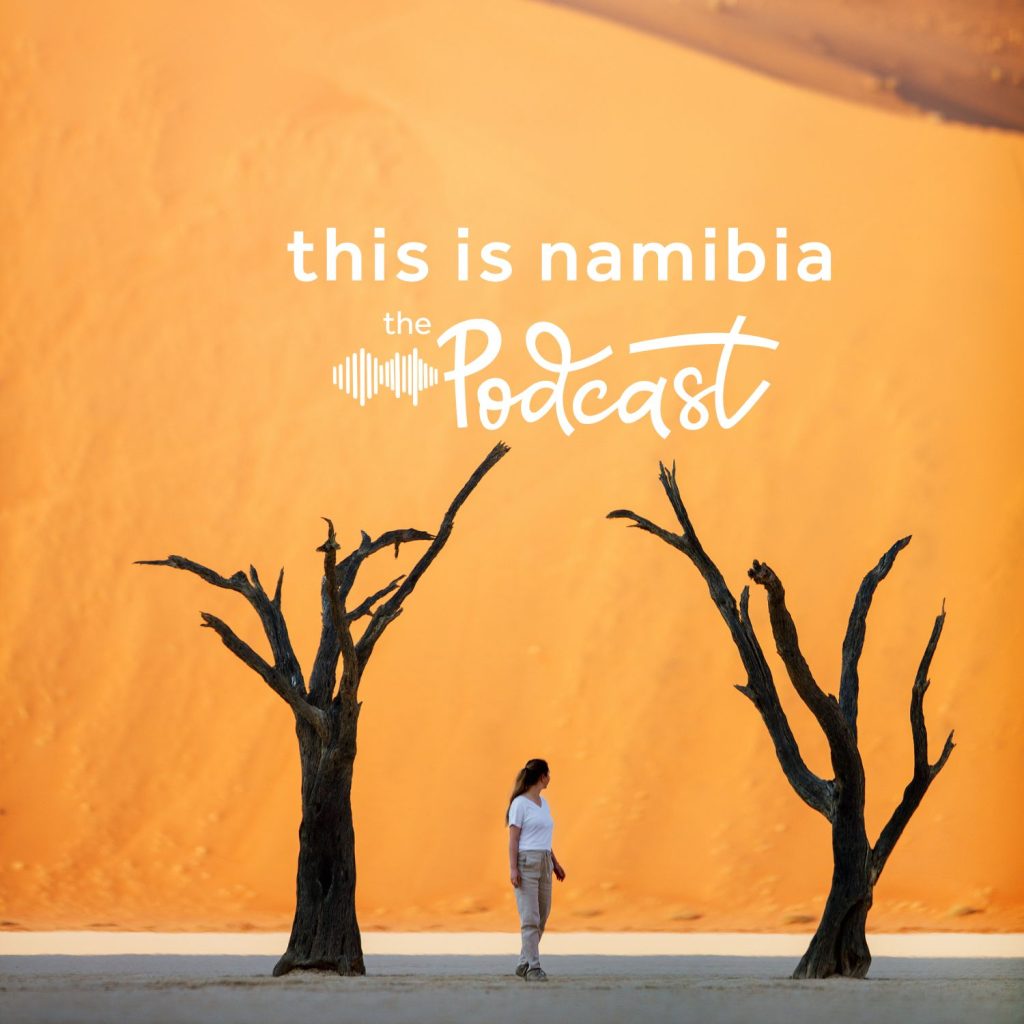
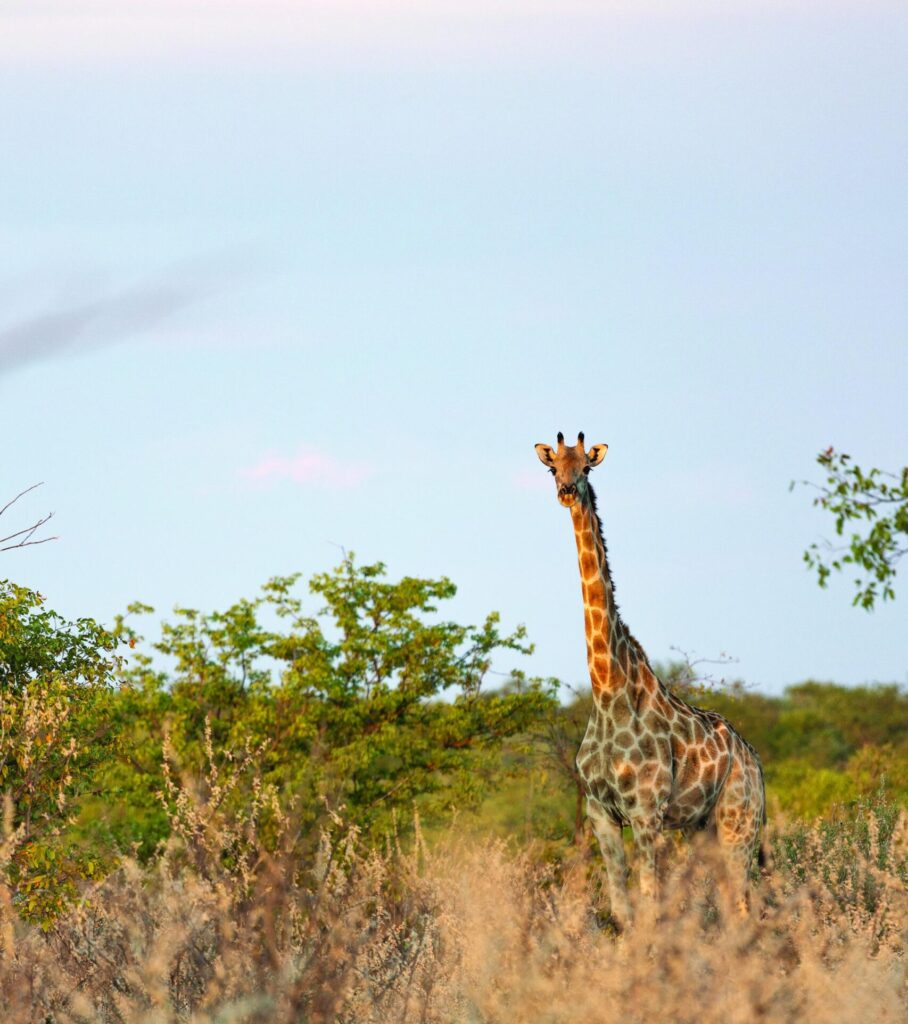
Discover
Etosha National Park
A region of unrivalled wildlife, timeless landscapes and unforgettable adventure
Text Elzanne McCulloch
From the ITB 2025 issue
In the hushed quiet of the afternoon, I found myself at a waterhole, the air alive with the sounds of nature. A soft breeze swirled white dust into the air, the particles dancing in the sunlight, the landscape all around barren and forlorn, yet the stretch of white pan before me is the epicentre of a prolific national park. A distant rumble of thunder hinted at rain, but for now, the drama unfolded under the expanse of an endless sky. Zebras and springbok mingled cautiously at the water’s edge, their every movement a study in grace. Then, like a scene from a dream, an elephant emerged on the horizon, its silhouette majestic against the golden light. Time seemed to stand still as it approached, each step resonating with the weight of centuries.
This is Etosha, a place where the wild reveals its rhythm, and the soul of Africa is laid bare. From its shimmering salt pan – so vast that it is visible from space – to its vibrant ecosystems teeming with life, Etosha is Namibia’s crown jewel. It is a sanctuary of contrasts, where the stark beauty of the landscape meets the vibrancy of its wildlife.
Etosha is a portal to the wild heart of Namibia, inviting you to witness life in its raw, unfiltered splendour.
Some key attractions in Etosha National Park
THE ETOSHA PAN: A SEA OF SALT AND SKY
The Etosha Pan is the park’s defining feature – a vast, ancient lakebed that transforms with the seasons. During the dry months, the shimmering salt flats stretch endlessly, creating a surreal, lunar-like landscape. When the rains arrive, the pan comes alive, attracting flamingos and other migratory birds in their thousands. The interplay of light, water and life is a photographer’s dream and a reminder of nature’s incredible adaptability.
GAME DRIVES AND SELF-DRIVES
Etosha’s extensive network of roads allows for thrilling self- drive safaris. With over 114 mammal species and 340 bird species, every turn promises a new encounter, from majestic elephants to elusive cheetahs. Guided game drives provide expert insights into the park’s flora and fauna, ensuring a deeper appreciation of its wonders.
PHOTOGRAPHY SAFARIS
For photographers, Etosha is paradise. The stark beauty of the salt pan, the vibrant hues of sunsets and the dynamic interplay of wildlife offer endless opportunities for stunning shots. Early mornings and late afternoons are prime times to capture the magic of the bush.
BIRDWATCHING
Etosha’s varied habitats make it a haven for bird lovers. From the striking Lilac-breasted Roller to the regal Kori Bustard, the park is a canvas of avian diversity. The summer months, when migratory species arrive, are particularly rewarding.
Etosha’s timeless appeal across the seasons

Etosha National Park transforms with the seasons, offering a unique charm year-round. In the dry season (May to October), wildlife congregates around waterholes, creating unparalleled opportunities for game viewing and photography. The sparse vegetation and clear skies enhance visibility, making it easier to spot iconic species. During the rainy season (November to April), the park comes alive with vibrant greenery, dramatic thunderstorms and the arrival of migratory birds. This is also the calving season, when young animals abound, and the Etosha Pan often fills with water, attracting flocks of flamingos and pelicans. Whether you visit during the parched stillness of the dry months or the lush vitality of the rains, Etosha’s ever-changing landscape ensures it remains captivating in every season.
OKAUKUEJO WATERHOLE: A STAGE SET FOR DRAMA
Okaukuejo is one of Etosha’s most popular camps, known for its floodlit waterhole. Here, visitors can witness nocturnal wildlife gatherings, from lions on the prowl to elusive leopards quenching their thirst. Sightings of rhinos and elephants are almost guaranteed. The waterhole is a magnet for animals, offering a front-row seat to the circle of life.


Etosha National Park is home to a wide variety of wildlife, but some species are particularly rare and special to spot.
African Wildcat (Felis lybica) – The ancestor of the domestic cat, this small feline is incredibly elusive and well-camouflaged. It is mostly active at night and is sometimes seen darting across roads or near waterholes in the evenings.
Pangolin (Smutsia temminckii) – One of the most sought-after and rarely seen mammals in Africa, the ground pangolin is highly nocturnal and incredibly shy. Lucky visitors may catch a glimpse of one shuffling through the bush on a night drive.
Honey Badger (Mellivora capensis) – Although they are tough and fearless, honey badgers are not frequently spotted in Etosha. These nocturnal animals are known for their ferocity and intelligence, and sightings are often reported at waterholes at night.
Why visit Etosha National Park?
Etosha is a realm of wild wonder, where the wilderness meets timeless landscapes. A haven for Namibia’s most iconic species, the park’s reputation for being one of the most popular national parks in Africa is well-deserved. Take your time and explore well. Visit the myriad of waterholes and spend leisurely hours waiting for and watching the park’s wild denizens in their natural habitat. Whether you are seeking close encounters with Namibia’s iconic wildlife, the serenity of its open plains or the thrill of discovery, Etosha delivers an experience that lingers in the heart long after the journey ends.
Let Etosha National Park take you on a journey into the wild.
PARK RULES TO REMEMBER
- Stay in your vehicle: Do not leave your vehicle except at designated rest stops, camps or viewpoints.
- Observe speed limits: The speed limit within the park is 60 km/h. Drive carefully to avoid disturbing wildlife.
- No feeding of wildlife: Feeding animals disrupts their natural behaviour and can make them reliant on human food.
- Respect park hours: Entry and exit are only allowed during designated times (from sunrise to sunset), and nighttime driving is prohibited.
- Dispose of waste responsibly: Use the bins provided to keep the park clean and protect its ecosystems. Plastic bags are prohibited in Etosha.
- Stay on the roads: Off-road driving is strictly prohibited to prevent damage to the fragile environment.
- No drones allowed: The use of drones is strictly prohibited in all national parks in Namibia.
By following these rules, you contribute to the preservation of this incredible wilderness for generations to come.

More to explore

Discover Airlines launches a new direct flight between Windhoek and Munich
